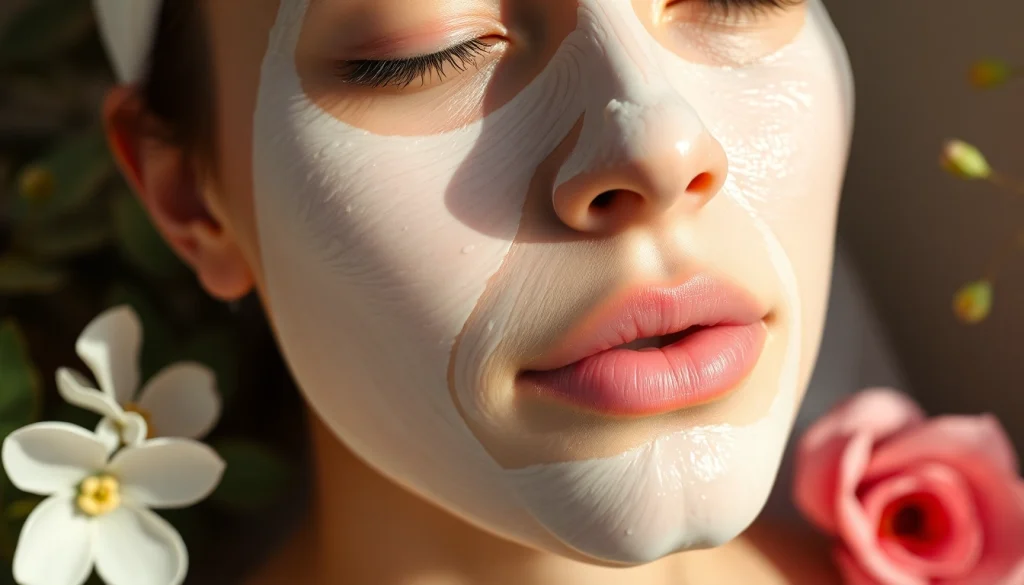
Understanding Facial Masks: Types and Benefits
What is a Facial Mask?
A facial mask is a skincare product formulated to be applied to the face, allowing for a concentrated treatment that provides numerous benefits. Typically, these masks are designed to stay on the skin for a specific amount of time before being rinsed off or peeled away. Facial masks come in various types, each targeting specific skin concerns such as hydration, exfoliation, or detoxification. As self-care continues to gain traction, incorporating a facial mask into your skincare regimen becomes an essential way to enhance your complexion and address individual skin issues effectively.
Popular Types of Facial Masks
Facial masks can be generally categorized into several types, each serving distinct purposes:
- Cream Masks: These thick, creamy masks are typically hydrating and nourishing, making them ideal for dry and dehydrated skin types.
- Clay Masks: Clay masks are excellent for oily and acne-prone skin as they help absorb excess oil and draw impurities out from the pores.
- Sheet Masks: Infused with serums, sheet masks are single-use masks made from materials like cotton or gel and are suitable for all skin types. They provide hydration and targeted treatments.
- Peel-Off Masks: These masks adhere to the skin and are peeled away to remove dead skin cells and impurities, commonly made from gel or film-like materials.
- Exfoliating Masks: These typically contain ingredients like alpha hydroxy acids (AHAs) or beta hydroxy acids (BHAs) to promote cell turnover and polish the skin, leaving it smoother and brighter.
Key Benefits of Using a Facial Mask
Incorporating facial masks into a skincare routine offers numerous advantages:
- Deep Cleansing: Facial masks penetrate deeply into the skin to unclog pores and remove impurities.
- Hydration Boost: Many masks are designed to provide intensive hydration, making them beneficial for dry skin.
- Improved Texture: Regular use of facial masks can lead to smoother skin texture by enhancing cell turnover.
- Skin Brightening: Some masks contain ingredients that can help diminish dullness and boost radiance.
- Relaxation: The application process can serve as a meditative experience, enhancing mental well-being.
Choosing the Right Facial Mask for Your Skin Type
Identifying Your Skin Type
Before selecting a facial mask, it’s crucial to identify your skin type. The main skin types are:
- Oily Skin: Characterized by excess sebum production, it often leads to shiny skin and enlarged pores.
- Dry Skin: This type lacks moisture and can appear flaky, tight, or rough.
- Combination Skin: A mix of oily and dry areas, typically with an oily T-zone and dry cheeks.
- Sensitive Skin: This type reacts easily to products and environmental factors, often resulting in redness or irritation.
Facial Masks for Oily vs. Dry Skin
Oily skin benefits significantly from clay or charcoal masks, which help absorb oil and reduce shine. Additionally, exfoliating masks with acid can help clear out pores and prevent breakouts. In contrast, dry skin thrives with cream masks rich in nourishing ingredients like hyaluronic acid or glycerin that infuse moisture and hydration, giving the skin a plump appearance.
Ingredients to Look for in Facial Masks
When choosing a facial mask, being mindful of ingredients can maximize their benefits:
- Hyaluronic Acid: Known for its excellent hydrating properties.
- Salicylic Acid: A go-to for oily or acne-prone skin, helping to unclog pores.
- Aloe Vera: Soothing for sensitive skin and provides hydration.
- Vitamin C: Excellent for brightening and evening out skin tone.
- Charcoal: Effective for detoxifying and cleaning out impurities.
How to Apply a Facial Mask Effectively
Step-by-Step Application Guide
Applying a facial mask correctly can significantly enhance its effectiveness. Follow these steps:
- Start Clean: Cleanse your face with a gentle cleanser to remove makeup and impurities.
- Exfoliate: For better penetration, exfoliate your skin to eliminate dead skin cells.
- Apply the Mask: Use a brush or your fingers to apply the mask evenly, avoiding the eye and lip areas.
- Wait: Follow the instructions on timing; most masks should sit for about 10-20 minutes.
- Rinse: Thoroughly rinse off with lukewarm water, followed by a splash of cold water to close pores.
- Moisturize: Finish with a good moisturizer to lock in hydration.
Common Mistakes to Avoid
Avoid these common pitfalls when using facial masks:
- Over-applying or leaving the mask on for too long, which can lead to irritation.
- Neglecting to patch test new masks, especially if you have sensitive skin.
- Using a mask that is not suitable for your skin type.
- Skipping moisturization after removing your mask.
- Failing to follow a regular masking schedule.
When to Use a Facial Mask for Best Results
Facial masks can be utilized effectively once or twice a week, depending on your skin’s needs and the specific mask type. Consider using a hydrating mask post-exfoliation or an exfoliating mask right before a big event for maximum effect. Always choose a time when you can relax and allow the mask to work—such as during a quiet evening at home or a pampering self-care Sunday.
DIY Facial Masks: Simple Recipes to Try at Home
Ingredients You Can Find in Your Kitchen
Creating your facial masks at home allows you to choose natural and effective ingredients. Some common kitchen staples include:
- Honey: A natural humectant known for its antibacterial properties.
- Yogurt: Contains lactic acid, perfect for gentle exfoliation and hydration.
- Oatmeal: Soothes irritated skin and can absorb excess oil.
- Avocado: Rich in healthy fats and vitamins that nourish and hydrate the skin.
- Banana: Full of vitamins and antioxidants, it can smoothen and moisturize the skin.
Step-by-Step DIY Facial Mask Recipes
Here are a few simple DIY mask recipes:
Hydrating Avocado Mask
- Mash half an avocado until smooth.
- Add one tablespoon of honey and mix well.
- Apply to the face and leave for 15-20 minutes.
- Rinse with lukewarm water.
Soothing Oatmeal Mask
- Blend one cup of cooked oatmeal and let it cool.
- Add two tablespoons of honey and a splash of warm water.
- Apply to the face, leaving it on for 10-15 minutes.
- Rinse thoroughly with warm water.
Brightening Yogurt and Honey Mask
- Combine two tablespoons of plain yogurt with one tablespoon of honey.
- Mix until well blended and apply to clean skin.
- Leave for about 15 minutes before rinsing off with water.
Benefits of Natural Ingredients in Facial Masks
Natural ingredients can be a fantastic alternative to commercial products, offering numerous benefits:
- Gentleness: Natural ingredients are often less harsh on the skin, reducing the risk of allergic reactions.
- Cost-effective: DIY masks can save money compared to expensive store-bought options.
- Customizable: Ingredients can be tailored to your skin’s specific needs for more personalized care.
- Freshness: Natural homemade masks are free from preservatives and synthetic additives.
Maximizing the Effects of Your Facial Mask Routine
Integrating Facial Masks into Your Skincare Routine
To maximize the benefits of facial masks, integrate them smartly into your skincare routine. Use them at predictable intervals. For example, applying masks on Sundays can establish a ritual that nourishes your skin and promotes relaxation.
Pairing with Other Skincare Products
Enhancing the effectiveness of your facial masks can be achieved by pairing them with the right skincare products. For instance, applying a hydrating serum post-mask ensures that your skin retains moisture. Meanwhile, combining an exfoliating mask with a gentle cleanser can help prepare your skin for deeper penetration of active ingredients.
Tracking Progress and Results Over Time
Documenting your skincare journey can help you to better understand the effects of facial masks on your skin. Consider creating a journal where you note down the types of masks used, skin reactions, and visible improvements. Over time, this can provide valuable insights and help you make informed choices about your skincare regimen.






